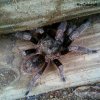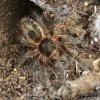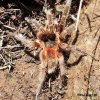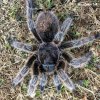Tazeday
Arachnopeon
- Joined
- Jan 29, 2018
- Messages
- 21
Wild Grammostola Rosea (normal colour form) that I have Found here in Chile 
Wrongly called “G.porteri” because it was exported under that name, but that dont have any scientific bases. The descrption of G.porteri is very bad and the drawings are very poor, no no one really know how a G.porteri is. Anyway, the most probable is that soon G.porteri will stop being a valid species.
Wrongly called “G.porteri” because it was exported under that name, but that dont have any scientific bases. The descrption of G.porteri is very bad and the drawings are very poor, no no one really know how a G.porteri is. Anyway, the most probable is that soon G.porteri will stop being a valid species.
Attachments
-
106.3 KB Views: 52
-
405 KB Views: 52





















